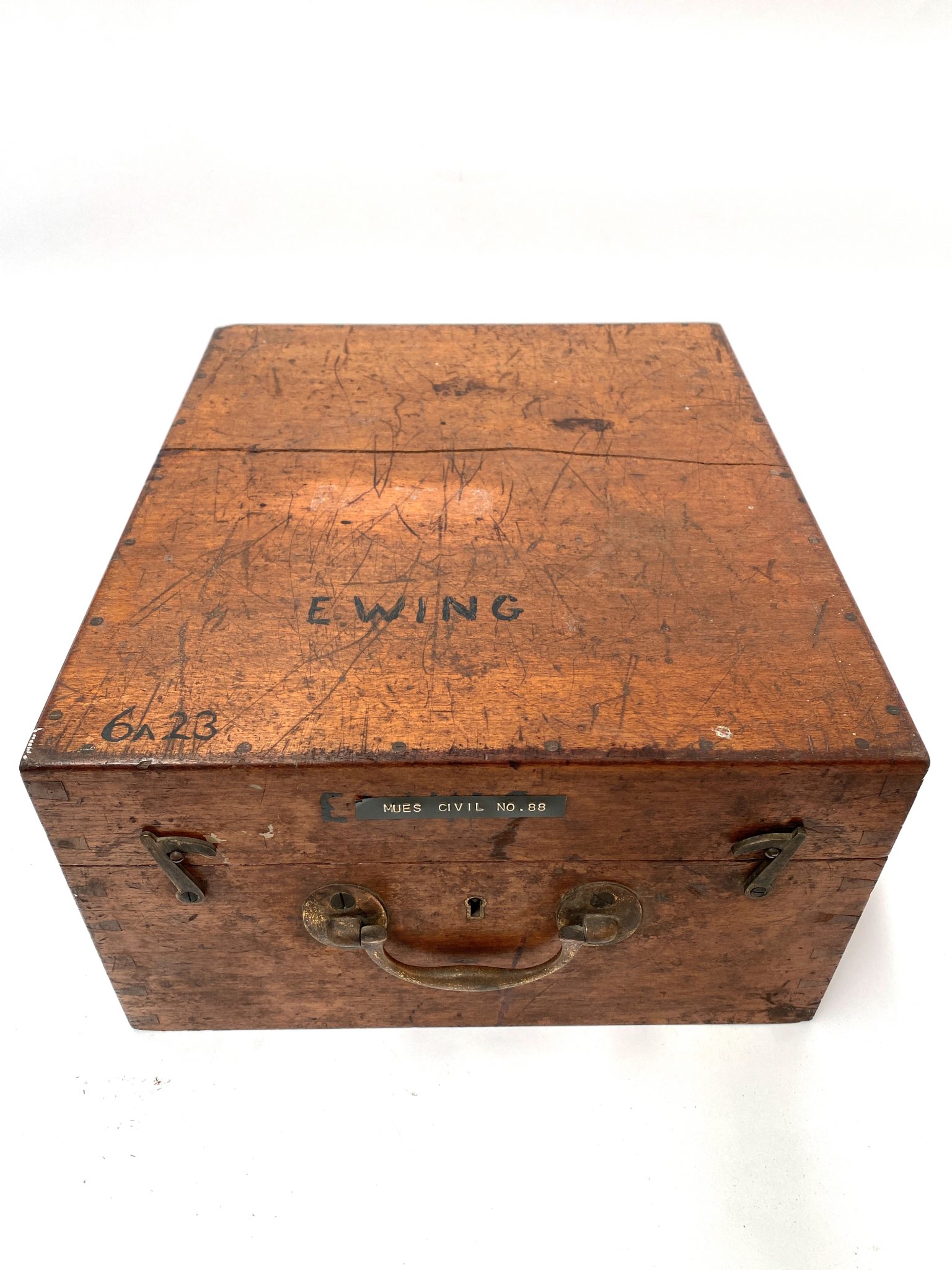
Rediscovering an Iconic Object
Engineering and IT CollectionA significant historic instrument known as the extensometer has been discovered in Melbourne. It was used by two of the founders of the Faculty of Engineering and Information Technology– William Charles Kernot and John Monash.
Richard Gillespie, Curator of the Faculty of Engineering and IT Cultural Collection, discovered the instrument while inspecting old equipment awaiting assessment in the faculty’s Heidelberg store. A beautifully crafted wooden box marked ‘Ewing’ attracted his attention. Research revealed it belonged to James Alfred Ewing, a Professor of Engineering and Applied Science at Cambridge University. Ewing designed the extensometer— an instrument used to measure small deformations when loads are placed on structures or samples of materials.
Further digging brought surprising results. In 1898, Professor Kernot— a railway and bridge design consultant for the Victorian Government— demonstrated the instrument to the Victorian Institute of Engineers. Having ordered the extensometer directly from Ewing, Professor Kernot measured deformations in iron and steel trusses and reported that it was capable of measuring to an accuracy of 25,000th of an inch.
John Monash’s major business enterprise was the design and construction of bridges and buildings using the new system of reinforced concrete beams. When Monash’s bridge in Ballarat failed during construction in 1904, he undertook a series of tests at the University, with this extensometer placed on the beam under increasing loads. Understanding the distribution of forces enabled Monash to adjust his designs and construction techniques. An external member of the Faculty of Engineering, after his success as a military commander during the First World War, Monash would eventually become Vice-Chancellor of the University from 1923-1931.
The extensometer will be displayed with early metallurgical instruments on the first floor of the Old Metallurgy Building.

